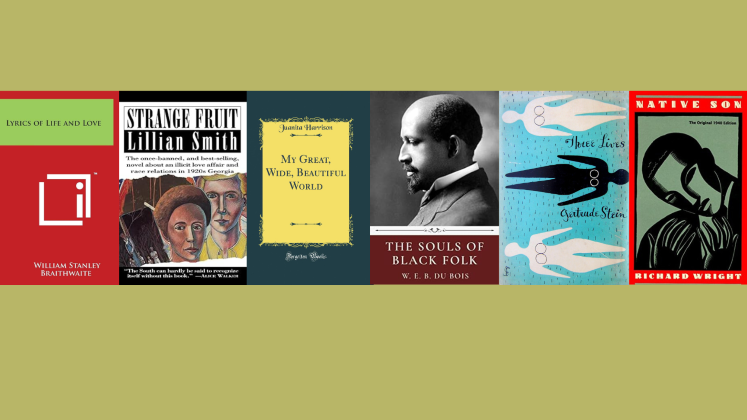In COVID-19 and Psychology: People and Society in Times of Pandemic, John G. Haas explores the psychological impact of the COVID-19 pandemic at all levels of society. This book will be useful for those in the social sciences, policymakers and the general public looking to understand how to build resilience through social support and combat the fear of the pandemic, writes Nupur Pattanaik.
COVID-19 and Psychology: People and Society in Times of Pandemic. John G. Haas. Springer. 2021.
 John G. Haas is a lecturer at the Austrian University of Applied Science in Psychology. He works on digital health, infodemiology (the epidemiology of misinformation or inconsistent health information found on the internet and via other sources) and other psychological issues. In his book COVID-19 and Psychology: People and Society in Times of Pandemic, he addresses the plight of people, their mental condition and society during pandemics. The book unravels the impact of COVID-19 on all levels of human activity and emotions, understanding the psychological background and societal context as well as successful processes of coping.
John G. Haas is a lecturer at the Austrian University of Applied Science in Psychology. He works on digital health, infodemiology (the epidemiology of misinformation or inconsistent health information found on the internet and via other sources) and other psychological issues. In his book COVID-19 and Psychology: People and Society in Times of Pandemic, he addresses the plight of people, their mental condition and society during pandemics. The book unravels the impact of COVID-19 on all levels of human activity and emotions, understanding the psychological background and societal context as well as successful processes of coping.
The book comprises eight chapters. Every chapter delves into experiences of infectious diseases, pandemics and epidemics that are transmitted by humans. During these times, we try to adapt in a variety of ways. Certain adaptations have detrimental consequences for individuals and society as we attempt to successfully manage pandemics through collective action.
The first chapter, ‘Epidemics and Pandemics — Why They Occur and How They Are Combated’, argues that the emergence and spread of infectious diseases are diverse processes. Pandemics and epidemics therefore form complex systems, requiring various psychological and remedial measures to combat them, including both medical and social interventions.
In the second chapter, the author gives a brief introduction to the human psyche, including aspects like perception, attention, emotion, motivation and cognition. Human beings are biopsychosocial units, where biological, psychological and social models of the human body interact. Through adaptation, a balance between these elements is maintained, yet with the pandemic there has been psychological stress that has threatened mental health and wellbeing. The human psyche has a wide range of possibilities for reaction and expression, especially in catastrophic times.

Image Credit: Photo by Parastoo Maleki on Unsplash
The psychological aspects of epidemics and pandemics are the topic of the third chapter. Since infectious diseases have always triggered negative thoughts and feelings among people, the fear of infection in human beings can become stronger than the consequences of the disease itself. This chapter unravels the significance of the social fear of contagion from a psychological perspective.
The concept of social contagion, which refers to the contagion of behaviour mediated by psychological perspectives, was first used by Gustave Le Bon. In his 1895 book The Crowd: A Study of the Popular Mind, he described how individuals under the influence of the masses lose their ability to criticise and enact self-control; instead, they behave instinctively. In relation to COVID-19, the author describes the emotional contagion that not only occurred through direct personal contact, but also through media reporting. Given the spectrum of mental disorders that have increased in the context of epidemics and pandemics, the need for resilience and the ability to cope are required.
In Chapter Four, the author explores a brief ‘Psychohistory of Epidemics and Pandemics’. He mentions historical events during the plague of Athens and during the Middle Ages as well as the epidemics and pandemics of the twentieth and twenty-first centuries. Haas refers to the advice in 1349 of Abu Jafar Ahmad Ibn Khatimah, a Muslim physician and poet, to practice isolation from one another in times of disease. Haas concludes that this will be more unifying for people in the long run and that this advice is still valid today during COVID-19, where social distancing has been necessary to make the survival of people possible.
The COVID-19 pandemic and the human psyche are discussed in the fifth chapter. COVID-19 remains an acute global health emergency that has impacted the physical and mental health of a large number of people as stress, depression and anxiety have developed. The media played a significant role as it has triggered fearful reactions, which led many people to undertake ill-advised, supposedly preventive measures, like taking water every fifteen mins or consuming natural remedies such as animal urine, garlic, onion or vinegar – and even the dangerous consumption of disinfectant.
There are various risk factors in times of pandemic for experiencing socio-psychological distress. Haas identifies the risk groups specific to COVID-19, including women, healthcare workers, older people, people with chronic conditions, children and adolescents as well as people with existing addictions. For resilience during these times, there needs to be a positive attitude to the use of social support and the maintenance of social ties among individuals as well as communication of necessary knowledge by governments to as many people as possible to mitigate the long-term impacts of the crisis.
The sixth chapter explores the social aspects of the COVID-19 pandemic, with Haas discussing alternative and pseudo-medical recommendations. Societies became more prone to social maladies like loneliness during the pandemic. Rumours in times of COVID-19, such as those surrounding face masks and social distancing, social media making predictions about the pandemic, violence in public spaces, domestic and family violence and a rise in paranoid thoughts have occurred regularly among the general population. Experiences of stigmatisation, suicide, conspiracy theories, xenophobia and racism were also striking and became prominent during the pandemic.
There was criticism of, dissatisfaction at and resistance to measures amongst the public: for example, governmental policies were rejected through protests and demonstrations against mandatory mask-wearing in Western countries. Haas emphasises the need for social support, cooperation and adaptation to new behaviours to fight the pandemic.
The harmful impacts of the infodemic are analysed in the seventh chapter. The term ‘infodemic’ was coined in 2000 by Gunter Eysenbach, a German health scientist. In his article ‘Infodemiology: The Epidemiology of (Mis)Information’, he stated that much of the health information on the internet is inconsistent with information from evidence-based sources. He therefore proposed criteria for testing the evidence-based nature of medical information.
Haas details the diminishing role of factual knowledge, addressing the infodemic and calling for it to be managed through proper moderation. The World Health Organization (WHO) has called for evidence-based interventions, involving relevant research disciplines identifying misinformation as well as four pillars of infodemic management. These are information monitoring; building e-health literacy and science literacy capacity; encouraging knowledge refinement and quality improvement processes such as fact-checking and peer review; and accurate and timely knowledge translation, minimising distorting factors such as political or commercial influences.
The chapter concludes by discussing successful modes of coping with the COVID-19 pandemic from a psychological perspective, with the author proposing some guidelines from WHO that have been offered for both adults and children. Since 2020, the Centers for Disease Control and Prevention (CDC) guide has also been prominently positioned on the first page of results for every COVID-19-related search query through Google. The overall societal management of this pandemic can be ensured by looking at the situation for society as a whole, overcoming psychological, social and economic blocks and building up resilience to mitigate against future crisis in times to come.
This book explores the social construction of fear during the COVID-19 pandemic and how the human psyche responds to the threat of contagion. COVID-19 and Psychology advises readers on coping mechanisms to fight this fear and related fake news, which can magnify anxiety and become a threat to people’s mental health and wellbeing. This book will be useful for those in the social sciences and policymakers as well as the general public in exploring how to combat the fear of the pandemic for the cohesion of society.
- This review first appeared at LSE Review of Books.
Please read our comments policy before commenting.
Note: This article gives the views of the author, and not the position of USAPP – American Politics and Policy, nor of the London School of Economics.
Shortened URL for this post: https://bit.ly/3zJKtNw
About the reviewer
Nupur Pattanaik – Central University of Odisha, Koraput
Dr Nupur Pattanaik teaches sociology in the Department of Sociology, Central University of Odisha, Koraput. She specialises in issues of subaltern studies, mobility studies, labour and work.






